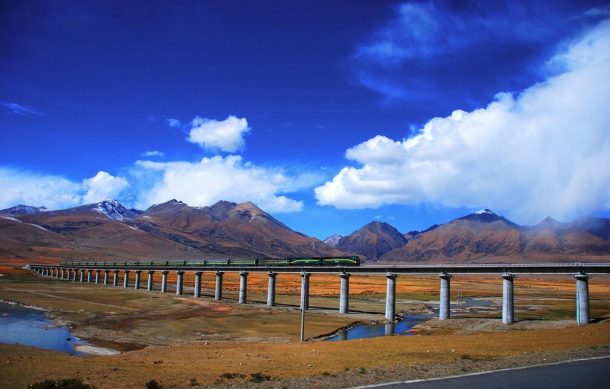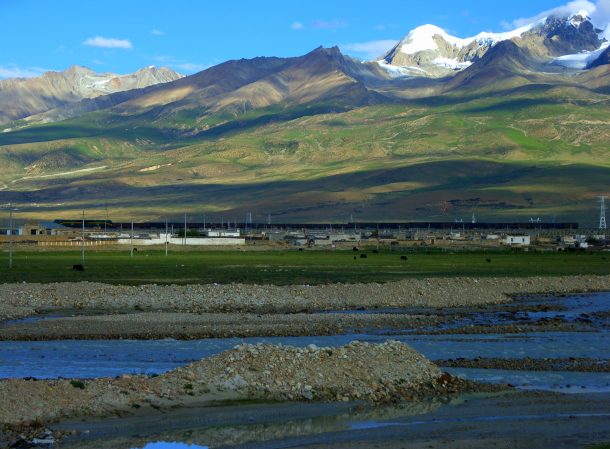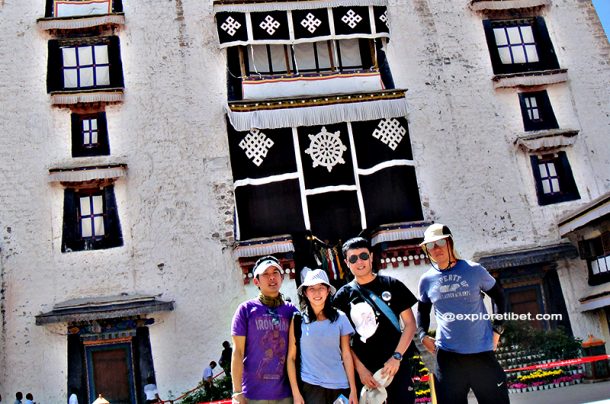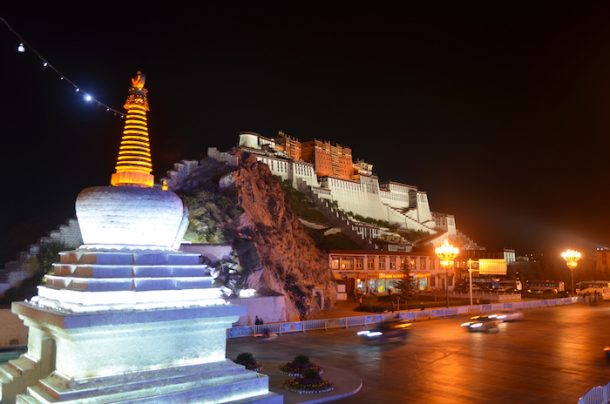
How To Take The Tibet Train to Lhasa?

Tibet train tour
Table of Contents
How to take the Tibet Train to Lhasa
Tibet, the roof of the world and a hugely popular tourist destination, has various routes to use to get there. While flying from Nepal or China is a fast way to get there, it can never beat traveling by train. The scenery along the Qinghai-Tibet Railway is breathtakingly spectacular and is certainly not something to miss.
The Tibet train runs from seven different cities in China; Guangzhou, Shanghai, Beijing, Chongqing, Chengdu, Lanzhou, and Xining. You can choose which departure point you wish to take, and book tickets either online or through your tour operator.
How to book the Tibet train

Tibet train tours
All travelers to Tibet must book their Tibet tours through a registered tour operator. They can also help with your Tibet train ticket booking if you are booking your tour with them. Chinese ticket offices require ticket reservations in advance, to guarantee you can get a ticket on the extremely popular routes to Tibet. Obviously, the earlier you book your ticket, the more likely you are to get the date of travel that you require. The Chinese ticket offices do not have an online booking facility, so you will need to book your tickets through a local travel agency.
If you want to travel to Tibet, it is best to book at least 3-6 months in advance, although the Chinese ticket offices will not send the tickets out until 5-10 days before travel. As this is not enough time to forward the tickets to your home country, the tour operator will have them delivered to your hotel room.
For online bookings, there are many travel agents who will book your train ticket for you, and you should only use a reputable travel agency. However, care should still be taken, as some travel agencies are unreliable, and may not be able to guarantee your ticket booking. All third-party bookings will also be subject to an agency booking fee, which can vary depending on the agency and availability of tickets.
There are top China Tibet train tours that specially designed by local Tibetan travel experts and you can choose the tours based on your duration, entry city, and interest, for more information on the Tibet train tours, you can contact local travel experts by emailing at sales@exploretibet.com

Group Pho, oat Deyang Shar in Potala Palace
Travel documents needed
The most important document you need is your Tibet Travel Permit, also known as a Tibet Tourism Bureau Permit. Without this, you will not even be able to board the train in China. This document is obtained by your tour operator and will be sent to you at your hotel by the tour operator. It normally takes around three working days.
However, as this only allows you to travel directly to Lhasa, and nowhere else, you will also need an Alien’s Travel Permit. This is needed when traveling to places outside the Lhasa region, such as Mt. Everest or Shigatse. It is obtained by your tour operator using a passport and Tibet Travel Permit once you get to Lhasa and takes a few hours. It is useful to remember that the Alien’s Travel Permit cannot be obtained on its own by any travel agent.
Another important document you will need if you are thinking of going to places like holy Mt. Kailash is the Military Area Entry Permit. Some areas of Tibet are sensitive military areas, and travel is strictly controlled there. You may also need the Foreign Affairs Permit for certain areas, and some parts of western Tibet will require local permits from the Cultural Antiquities Department.

Tibet Potala palace tour by Explore Tibet
Arriving at the station
With the trains often being fully booked, it is advisable to get to the station early, so that you can get in line. There are always long lines to board the train, and queuing is required. You cannot just walk to the platform and board as you do in the west. If you have already collected your ticket, which is advisable, you can proceed to the check area, where you and your luggage will be checked by security.
Your ticket and ID (Passport) will be checked first and then you move to the luggage check. Make sure you prepare your ticket and passport for the checks, as well as your Tibet Travel Permit, and keep them on your person at all times. There may be a few more ticket checks before you reach the train.
Where to wait for boarding the train and how to find your seat in the right cabin
When you have had your luggage checked, you can go to the waiting area for your train. Large LED screens will tell you which waiting area you need, and which gate to go to afterward to board. The train’s number is printed on the top-middle part of the ticket; e.g. K9821 or Z6801. The waiting room will be displayed as a floor and room number, such as 2楼1候, meaning the second floor, first waiting room.
As each waiting room may service several trains, make sure you get the right gate, and platform from the LED screens. Once you have the right gate, you can normally check-in and board 15 minutes before departure. The stairs show the platform number above each, so you can easily find your platform.

What is the information on your train ticket?
Your ticket is full of information that you will need to find the right waiting room, platform, train, carriage, and berth. The top of the ticket has the departure and destination in Chinese and English, with the train number in between. The departure date and time are below to the left, with the car and berth numbers to the right. Your berth position will be shown in Chinese, with 上 for top, 中for middle, and 下 for the bottom.
Below your berth details, you can see your ticket class, and to the left, you will see the price of the ticket, your name and passport number, and some helpful tips in a little box, which are useful if you can read Chinese. On some tickets, your departure platform will be listed in the top right corner.

Luggage
Your luggage should always be in your cabin with you and can be stored on the luggage shelf above the top berth, or below the bottom berth. You will need to carry the luggage on the train yourself, as there is no luggage check-in service.
Dining, Restrooms, and Oxygen on the train
On every car, there is a washroom, as well as restrooms. The Tibet trains have both Chinese and western-style toilets and are clean and well sanitized. Unfortunately, the trains do not have private washrooms in the sleeper cabins, and all are shared facilities.
For those who are feeling the effects of altitude sickness, there are oxygen points on the train, as well as the train having a general oxygen supply system to keep the oxygen levels up to normal during the trip. The oxygen tubes are available from the conductors, and there are outlets in every cabin, as well as along the wall in the corridors.
There is food available on the train, and it is freshly prepared in the onboard kitchen. The dining car seats around 40-50 people and has wide windows to enjoy the view while you dine. The food served is a mixture of Chinese and Tibetan dishes, and is all of average quality, albeit a lot more expensive for what you are getting. That said, the food is tasty and nutritious, and it is a good start to sampling some of the Tibetan foods prior to arriving in Lhasa.
If you do not want to eat in the dining car, there is a food trolley brought to the cabins with a selection of Chinese dishes, packed in styrofoam food boxes. Prices range between 30-40 Yuan and there are snacks available from the train attendants who deliver the boxed meals to the cabins. Boiled and drinking water is available in all cars as well.
Recent Posts
Can Tourists Visit Tibet?
Exploring the Beauty of Tibetan Handicraft
The Ultimate Guide to Tibet Tours, Travel, and Trekking Adventures
All Categories
- About Tibet
- book a Tibet tour
- Buddhism Practice
- Budget Tour
- China-Tibet Train
- Customized Tibet tour
- Historical Sites
- Hot Springs in Tibet
- News
- Photography in Tibet
- Tibet attraction
- Tibet Group Visa
- Tibet Motorcycle Tour
- Tibet Small Group Tours
- Tibet Tours and Tibetan Tour Guide
- Tibet Train
- Tibet Travel FAQs
- Tibet Travel Information
- Tibet Travel News
- Tibet Travel Permit Update
- Tibet Travel Prices Rises
- Tibet Trek
- Tibet Trekking Tour
- Tibet weather and climate
- Tibet Wildlife animals
- Tibet Winter Tour
- Tibetan Buddhism
- Tibetan Cultural Features
- Tibetan Culture and Poeple
- Tibetan Festivals
- What to see in Tibet


